Rečníci
Rečníci, ktorých môžete stretnúť na PyCone SK 2019
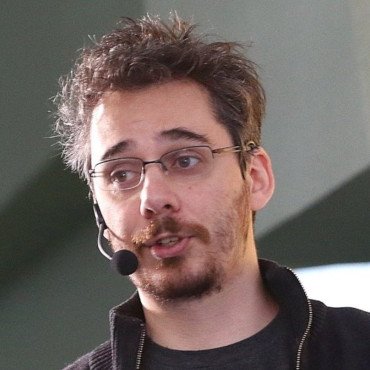
Honza Král
Python vývojár v Elastic
Honza je Python inžinier v Elasticu, spoločnosti za Elasticsearchom a ďalšími open sourcovými produktami, kde spravuje pythonské knižnice. Predtým bol súčasťou Whiskey Media, používal Django na tvorbu web stránok pre väčšie publikum. Vždy ho priťahovala práca s dátami a snaha pomôcť tímom škálovať ich kód a dáta.
So you want to be an Engineer?
Software Engineering is a new field, have we figured out all the ins and outs of how best to work in it?
For a lot of people the technology field has always been a semi-magical place where engineers use their arcane knowledge to tease the secrets from the computer and unfortunately we have bought into this myth... Let us examine what are some of the myths surrounding out field and which aspects might actually be useful. Is SW engineering an art or just another skill? Is talent required? Does it even matter? What about the 10X engineer...?
I will be sharing some insights that I have learned from trying to answer these questions for myself, part based on research, part on personal opinion.

Helen Li
senior softvér vývojárka v Google AI Genomics
Helen Li je senior softvér inžinerka v Google AI Genomics. Promovala na Massachusetts Institute of Technology, pred prácou na Nucleuse, bola aktívnou prispievateľkou k projektu Chromium, kde viac ako štyri roky vyvíjala open sourcové knižnice a nástroje.
Nucleus: an open-source library for genomics data and machine learning
Nucleus is a Python library designed to make it easy to read, write, and analyze genomics data in common bioinformatics file formats such as SAM and VCF. In addition, Nucleus enables seamless integration with the TensorFlow machine learning (ML) framework. Nucleus is heavily used in DeepVariant, a state-of-the-art convolutional neural network variant caller, and in other ML projects at Google AI Genomics. This talk will give an overview of Nucleus, its features, and its APIs.

Juraj Hromkovič
profesor na ETH Zürich
Profesor Juraj Hromkovič, DrSc., ktorý pôsobí ako vysokoškolský pedagóg vo Švajčiarskom federálnom technologickom inštitúte (ETH) v Zürichu. Je autorom mnohých kníh a vedeckých publikácií, najmä v oblasti algoritmiky, pravdepodobnostných algoritmov a didaktiky informatiky. Zameriava sa na vzdelávanie učiteľov informatiky a zavedenie vyučovania informatiky na základné školy. V roku 2017 prevzal štátne vyznamenanie Pribinov kríž I. triedy, ktoré mu udelil prezident SR Andrej Kiska.
Programovanie s LOGO-filozofiou ako model všeobecného vzdelávania pre všetky odbory
Jean Piaget prišiel s konceptom "learning by doing" s cieľom zvýšiť motiváciu a trvanlivosť vedomostí a prehĺbiť chápanie študovaných objektov vďaka vlastnej aktivite v procese učenia sa. Seymour Papert obohatil tento koncept o "getting things to work" vo svojej implementácii výučby programovania v programovacom jazyku LOGO. My sme na ETH skombinovali tento prístup s konceptom "critical thinking", ktorý odmieta vyučovať hotové produkty vedy (fakty, modely, metódy,...), ale vyžaduje si učiť procesy ich vytvárania. Pre prípravu vzdelávania tisícky učiteľov základných a stredných škôl pre výučbu programovania, sme vyvinuli v rámci týchto výučbových konceptov prostredia na výučbu programovania, ako aj iných informatických tém a napísali k nim sériu učebníc. V tejto prednáške sa budeme venovať prostrediam TigerJython (dialekt Pythonu) a viacerým verziám jazyka LOGO (textovým i blokovým) a vysvetlíme proces ich tvorby z pohľadu potrieb výučby programovania. Predstavíme aj informatiku ako viac než 5000 rokov starú vedu a ozrejmíme jej prínos pre všeobecné vzdelanie a jej nenahraditeľnosť vo vzdelávaní budúcich generácii.

Markus Holtermann
Technik backendu a infraštruktúry v Crate.io, Django core prispievateľ
Markus Holtermann pracuje v Crate.io ako inžinier pre back-end a infraštruktúru. Bol Django core prispievateľom od začiatku roku 2015. Je členom Django bezpečnostného tímu a tiež organizátorom a poradcom pre konferencie DjangoCon. Markus viedol projekt ubuntuusers.de - nemeckej komunitnej platformy, kde v roku 2010 objavil Python a Django.
Less Obvious Things To Do With Django's ORM.
Django’s ORM is powerful. And it has been for ages. It only became even more powerful over the last years. Django’s ORM can be intimidating because it can do so many things. And it can also be confusing when trying to find out how to do things.

Luke Spademan
žiak informatiky a Python nadšenec
Luke je 17-ročný žiak informatiky, matematiky, pokročilej matematiky a fyziky v 12. ročníku z Rugby, UK. Rád programuje v Pythone a micro:bit považuje za skvelý nástroj na výuku, ktorý by sa mal oveľa viac využívať. V minulosti už prednášal na PyCon UK a teší sa na prednášku na PyCon SK 2019. Rozprávať bude v sekcii EduSummit o tom, ako spraviť informatiku pre žiakov na školách zaujímavejšou.
Controling a robotic arm with micro:bits. How to make computer science education more interesting.
Captivating a group of children for a sustained period of time is notoriously hard. I will be exporing with you how the micro:bit can be used to engage a young audience with interactive demos and programming activities.
Children love to physically interact with hardware. That is what is great about the micro:bit. It not only has built in LEDs and buttons but can also control bigger more exciting electronics like robotic arms. This allows for setup that gives students of all ability levels a challenge. Students that are beginners to programming can be given a more complete program or walk throught a worksheet that takes them through the process of controling the device (in this case a robotic arm) step by step. Students that have higher programming skills can be given a more bare bones / boilerplate source file and can write code to control the arm with less guidance.
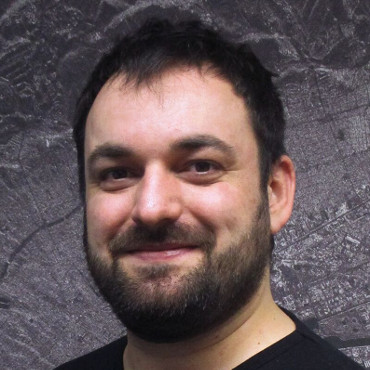
Jakub Balas
Python vývojár v Iceye
Po niekoľkých rokoch používania Pythonu v e-commerce, bankách a médiách vo Veľkej Británii, Jakub momentálne vedie technickú časť pozemného segmentu v Iceye, fínskom startupe na sledovanie Zeme. Budujú veľký družicový SAR (synthetic-aperture radar) systém a Python využívajú vo veľkom v rôznych častiach projektu. Iceye nedávno úspešne vypustilo už druhú družicu ICEYE-X2 na palube rakety Falcon 9 spoločnosti SpaceX.
Using Python in new space industry is not a rocket science
What we do at Iceye and how Python is allowing us to grow fast and be unique.
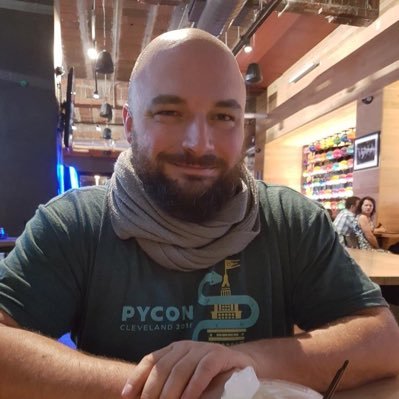
Stéphane Wirtel
Prispievateľ do CPython, člen PSF, EuroPython, AFPy a freelancer.
Prispievateľ do CPythonu, člen tímu EuroPython od roku 2015. Rád si zdokonaľuje svoje zručnosti s najlepšími postupmi , TDD, CI, atď. Python developer od roku 2001 a člen PSF, EuroPython a AFPy, je taktiež freelancer v úžasnom svete Pythonu.
What's new in Python 3.7?
Scheduled for release in mid-June before the conference, Python 3.7 is shaping up to be a feature-packed release! This talk will cover all the new features of Python 3.7, including the Data Classes and the Context Variables for the asynchronous programming with asyncio.
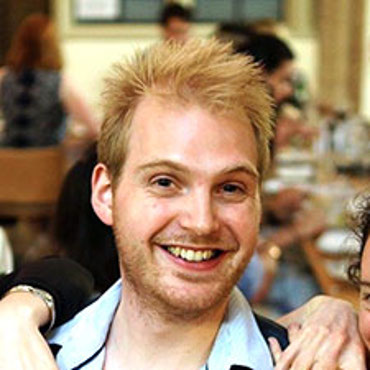
Meredydd Luff
Tvorca Anvilu
Meredydd programoval od starých dobrých čias QBasicu a Delphi, keď bolo ešte jednoduché začať tvoriť softvér. Vytvoril Anvil, aby sa tieto časy vrátili. Meredydd pracoval v startupoch od telkomu po hudbu a má PhD z Cambridge o využiteľnosti programovania.
Anvil: Full-stack Web Apps with Nothing but Python
Building for the modern web is complicated and error-prone: a typical web app requires five different languages and four or five frameworks just to get started. Wouldn't it be nicer if we could do it all in Python? With Anvil, you can design your page visually, write your browser-side and server-side code in pure Python, and even set up a built-in database in seconds. In this talk, Meredydd will walk us through how Anvil works under the bonnet, and the challenges of building a programming system that's easy to use without sacrificing power.

Shaun Taylor-Morgan
Python vývojár v Anvile
Shaun začal programovať simulovaním horiacej fúznej plazmy v najväčšom laserovom systéme na svete. Zahľadel sa do Pythonu ako nástroja na analýzu dát a odvtedy už nepozeral po žiadnom inom. Teraz chce všetko zmeniť na Python, preto pracuje v Anvile.
Anvil - Build a full-stack web app using nothing but Python
Anvil is a platform for rapidly developing web apps using nothing but Python. It's like Visual Basic for the web. It has a drag-and-drop editor for constructing a user interface, controlled by Python code in both the client and a hosted server environment. This is an interactive workshop where you'll be guided through creating an app. Either: * A TODO list - a simple example of a Create, Read, Update, Delete (CRUD) app * A weather data dashboard * An app that controls a remote machine from the web * Any other idea you might have! You'll need a laptop to follow along. For a preview, have a look at this short video https://anvil.works/#about

Adam Števko
Bezpečnostný a DevOps inžinier
Adam je momentálne bezpečnostný inžinier, ale ako SRE/bezpečnostný/DevOps inžinier pracuje už dlhý čas. Miluje UNIX, je oddaným používateľom a evanjelistom Pythonu. Zaujíma sa o operačné systémy, bezpečnosť, siete a vlastne čokoľvek, čo upúta jeho pozornosť.
Be a good colleague and help your Security Engineer!
2018 was the year of GDPR. Security is a shared responsibility and has become even more important than ever before. Nevertheless, not everybody realizes this and security incidents and problems continue to occur, thus resulting in catastrophical consequences for your business. In this talk, I will be sharing how one can utilize best practices to deliver less vulnerable code by using tools to prevent security holes, how to handle incidents from the developers’ point of view and how you can assist your Security Engineers. By following these guidelines, you will make your Security Engineers happy and your code more secure.
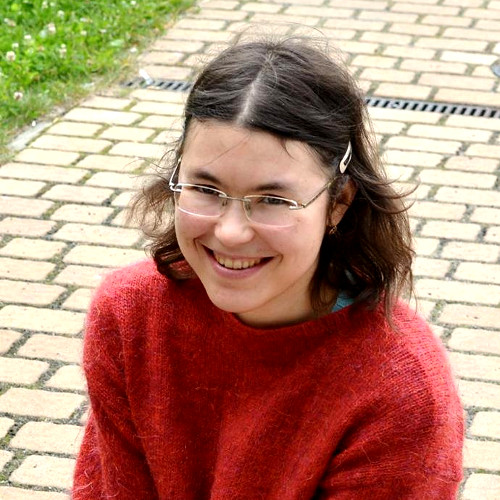
Stanislava Sojáková
Nezávislá konktraktorka a testerka vzdelávacej appky
Mojou vášňou je odhaľovanie skrytého a rozdúchanie vášne pre to ostatné, najmä v oblasti riešenia problémov.
Lessons Learned from Leading Bratislava Peer Python Learning Group
On Jan 26th, the first meetup of the Bratislava Peer Python Learning Group series took place, and it was a blast. Do not take my word for it, read what attendees had to say: “At home, I go on Facebook or to the fridge. Here, it is a study atmosphere, and I am pulled to learn.” “There are people here, who explain to me where I went wrong. I would be frustrated and give up without them.” “I am looking forward to those Saturday community meetings.”
There is some magic going on in the Python Meetups the attendee statements of which you could read above. I give you a glimpse of why we at Progressbar founded the group, how the model of blended learning works, and what benefits had participants felt from stretching their computational thinking muscles. I will talk about the peer and community aspect of the course and describe the composition of the group. Finally, I outline the vision for these groups and give some tips for organizing such a group.

Dmitry Dygalo
Vedúci technológií v kiwi.com
Dmitry je šéfom technológií v kiwi.com v Prahe. S Pythonom začal v 2010 ako hobby počas štúdia na univerzite, neskôr po skončení školy pokračoval ako fulltime developer. Miluje písanie testov a dbá na udržateľnosť kódu. Jeho hobby sú open source a cestovanie.
Testing network interactions in Python
Many modern Python applications interact with 3rd parties over network and packages like requests and aiohttp are incredibly popular nowadays. It makes it essential to know how to test network interactions. It is particularly important for microservices - to connect them you need to do network calls.
This talk will walk from most straightforward ad-hoc solutions to more tunable and extensible ones. You’ll learn how to approach testing network on different isolation levels in sync and async code, take away ideas and practices how to use with popular Python tools like responses, pook, VCR, and pytest.

Samuel Hopko
Nadšenec cloudových technológií
Som nadšencom cloudových technológií. S cloudom som sa prvýkrát stretol počas štúdií, keď som si vyberal tému diplomovej práce. Moja cesta začala s opensourcovým Openstackom. Po štúdiu som pracoval ako cloudový špecialista v Davinci software, kde som získal väčšinu svojich znalostí o Amazon web services (AWS). Posledné štyri roky je mojou dennou rutinou architektuúra, implementácia, údržba, nasadzovanie, automatizácia… infraštruktúry a aplikácií od vývojových až po produkčné prostredia. Zbieram rôzne AWS certifikáty a som hobby Pythonista. Z času na čas ma môžete stretnúť na Žilinskej univerzite, kde prednášam o cloudových technológiách. Stretnúť ma tiež môžete na žilinskom konzervatóriu s gitarou v ruke.
Ak chcete vedieť viac o možnostiach Amazon web services alebo sa chcete len porozprávať o cloudových technologiách, neváhajte ma kedykoľvek zastaviť a spýtať sa.
Amazon Web Services - Alexa skills
Alexa is Amazon’s cloud base voice service that provides natural voice experience to end users. This opens a way to use human voice as input/output for you applications. You can easily create voice-controlled applications (called Alexa skills) or just voice interface for your current products or anything you like! Tools provided by Amazon web services (AWS) are easy to use and if used correctly, then completely free. Once skill is done, it’s just a matter of minutes to deploy it as high-available, auto-scaled, serverless, globally distributed application using AWS. Then you can use Amazon Alexa Skill store to sell your product all over the world. I would like to show you how it works, what AWS provides to developers and how can anybody create Alexa skills using your favorite language – Python.

Miroslav Šedivý
Senior Software Developer v solute GmbH
Narodený v Československu, študoval vo Francúzsku, žije v Nemecku. Pomocou Pythonu pre vás naháňa najlepšie ceny na webe. Nadšenec pre cudzie jazyky a to „ľudské” v informatike: abecedy, kalendáre, meranie času, ale aj učenie počítačov práci na nudných úlohách.
A Day Has Only 24±1 Hours
Not only will the Sunday in the week after this PyCon.SK 2019 be one hour shorter, but also it may steal you even more sleep because of all your Python code that has to work smoothly during daylight saving time changes or otherwise manipulate time zones. While correct working with datetime objects and offsets can be mastered, you have no control of the information on local time zones. Exclusive domain of geographers one hundred years ago, the time zones adjustments became a toy in the hands of governments all around the world.
After a short overview of Pythons datetime and pytz libraries you'll learn how the information on time zone changes gets into your system. We'll fly quickly around the world's over five hundred time zones, but will also focus on the case of Slovakia and surrounding countries. Two centuries of propaganda and chaos in thirty minutes. Maybe that will make you want to avoid time zones in your code altogether!

Manoj Pandey
Softvérový inžinier v Yelpe.
Manoj pracuje aktuálne ako softvérový inžinier v Yelpe. Prednáša na Pythonských konferenciách a obhajuje otvorený softvér. V minulosti spoluorganizoval sériu konferencií PyData Delhi a vybudoval komunitu o veľkosti viac ako 5000 ľudí.
Gotchas and landmines in Python
Python may be one of the simplest and most flexible programming languages out there, but it is still a programming language. It still has syntax, datatypes, and some occasional dark corners. Python “warts” are things for which people have criticised Python, typically aspects of the language or mechanisms of its implementation, because such aspects either expose certain surprising inconsistencies, are regarded as omissions, or cause irritation for parts of the community in some sense. This talk will be about common pitfalls (termed warts/landmines) that people face using Python programming language.
The only pre-requisite is a basic familiarity with Python programming language. Although it’ll be good that you have laptops with Python already setup, it’s not required as such !

Joel Lord
Python nadšenec a bezpečnostný evanjelista
Joel Lord is passionate about web and technology in general. He likes to learn new things, but most of all he likes to share his discoveries. He does so by travelling to various conferences all around the globe. He graduated with a college degree in computer programming back in the last millennium. Apart for a little break to get his BSc in computational astrophysics, he has always been in the industry. As a technical evangelist with Auth0, he meets with developers to help them make the web a safer place. During his free time, he is usually found stargazing in a campsite somewhere or brewing a fresh batch of beer in his garage.
I Don't Care About Security (And Neither Should You)
Remember when setting up a login page was easy? It seems like nowadays it can take weeks to start a project -- creating a signup form, a login form, a password recovery screen, and all the validation in between. And you haven't even started on security considerations yet. During this presentation, the attendees will be introduced to OpenID Connect and OAuth. They will also learn how to leverage these technologies to create more secure applications. Most importantly, they will learn how to delegate authorization and authentication so they can focus on their real work and forget about all that security stuff.
Besides this talk Joel is planning a workshop on building a passwordless authentication server.
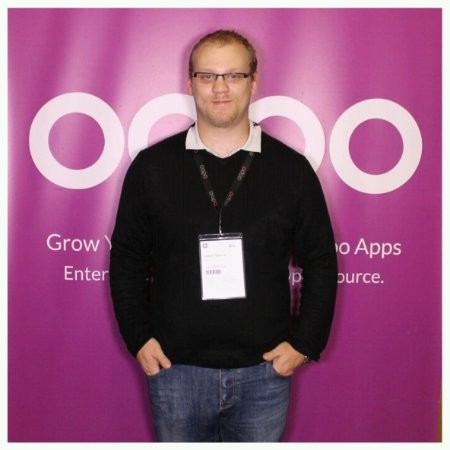
Jakub Šedinár
Odoo evanjelista v IMPLEMENTO
Vo svojej praxi som prešiel rôznymi pozíciami. System admin, support, DevOps, lokalizačný inžinier, konzultant, školiteľ. No vždy sa skôr či neskôr vrátim k Odoo. Odoo sa venujem od 2013, kde som sa s ním stretol prvýkrát v rámci analýzy dostupných ERP systémov pre potreby vtedajšieho zamestnávateľa. Medzičasom som absolvoval technical training priamo v centrále Odoo v Bruseli a konferenciu. Aktívne sa zapájam do aktivít v Odoo komunite. Aktuálne spolupracujeme v rámci spoločnosti Implemento - jediného Odoo partnera na Slovensku, na rozširovaní ERP Odoo. Možno sa pýtate prečo Odoo? Preto, že je to software, ktorý je rýchly, kvalitný a poskytuje mnoho funkcionalít.
Odoo
Odoo na Slovensku - game changer slovenského ERP prostredia. Chceme vám povedať a ukázať, čo je Odoo, ako funguje, prečo je lepšie ako iné riešenia. Ako je zameraný, aká je architektúra riešenia...
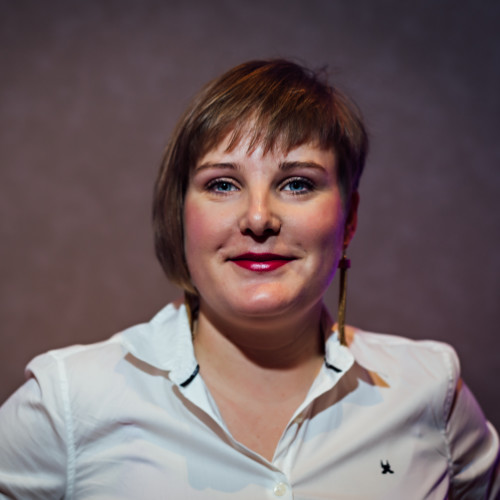
Petra Dzurovcinova
Splnomocnenkyňa pre inovácie
Petra sa rozhodla vyskúšať život v samospráve a od januára pôsobí v meste Bratislava ako Chief Innovation Officer, po slovensky Splnomocnenkyňa pre inovácie.
Petra stála pri zrode Slovenskej aliancie pre inovatívnu ekonomiku(SAPIE), ktorá je dnes kľúčovým zástupcom technologických firiem na domácej aj medzinárodnej scéne s viac ako 80 členmi. V SAPIE bola spoluautorkou expertných dokumentov o startup ekosystéme, analýze a spôsoboch podpory rýchlorastúcich firiem a spôsoboch ako efektívne implementovať Jednotný Digitálny trh v EÚ a na Slovensku. Po vysokej škole pôsobila tri roky v Austálii v Royal Institution of Australia, ktorej cieľom bolo predstaviť vedecké a technické znalosti širokej verejnosti. Počas svojej kariéry si vyskúšala aj startupový svet na vlastnej koži s projektom Freya. Je spoluautorkou kapitoly o podnikaní a inováciách Plánu Bratislava.
Inovácie v meste Bratislava
Čo všetko robíme v Bratislave pre inovácie a ako môžete byť súčasťou tohto procesu?
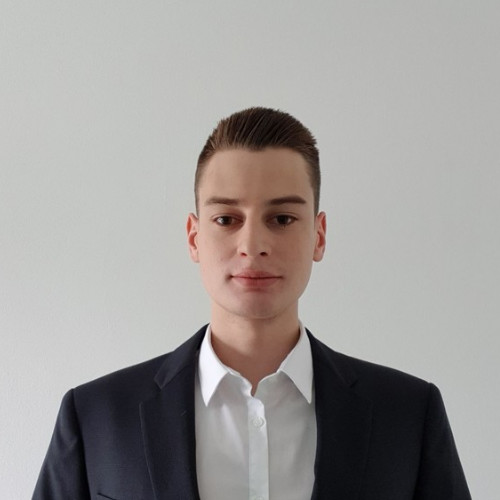
Jakub Mertus
Data Scientist
Magisterský titul z časticovej fyziky a kozmológie z University Birmingham a magister z Data Science z University of Bath. Aktuálne pracujem pre Tatra banku ako Data Scientist.
Automatická korekcia písaného prejavu prirodzeného jazyka s využitím znakových a kontextuálnych modelov
Banka disponuje veľkým objemom neštruktúrovaných dát. Na ich použitie je potrebné tieto dáta očistiť. Preto vyvíjame modul na korekciu gramatických chýb a preklepov, ktorý sa skladá z troch hlavých častí. Prvou časťou je takzvaný "re-diakritizátor" zameraný na obnovenie diakritiky v slove bez nej. Druhá časť je znakový model SymSpell. Ten navrhuje možné opravy slova na základe Damerau-Levenshtein metriky. Tretia časť využíva známy model Word2Vec na pochopenie kontextuálnych závislostí slov v relevantnom dokumente. Vývoj modulu nie je ešte ukončený, avšak subjektívne posúdenie modulu indikuje použiteľnosť v špecifickom bankovom prostredí.
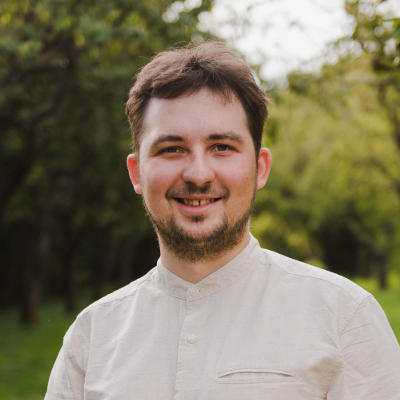
Sviatoslav Sydorenko
Cez deň softvérový inžinier a v noci správca open source softvéru
Ahoj, som Sviat. Nájdeš ma ako @webknjaz na Twitteri a GitHube. Som Python hacker. Cez deň pracujem pre Red Hat na Ansible Engine ako člen Core teamu. Okrem toho, v noci som správca a prispievateľ do open sourcových projektov. Spravujem CherryPy a aiohttp. Medzi moje momentálne záujmy patrí vývoj automatizačného workflow, ktoré spraví spravovanie open source projektov jednoduchšie a lepšie škálovateľné.
GitHub Boty: Vzostup strojov 🤖
Hello, fellow human!
You probably spend too much time regretting that manual recurring routines don't do themselves. Let's change this! This workshop will empower you to automate all the things using GitHub Apps integration type as reusable restless workers helping you overcome typical maintainer frustrations. We'll have a walkthrough of the complete application creation and deployment process: from creating an App entity in the GitHub UI, to actual coding and to shipping your code via Heroku.
To participate in the hands-on, bring your laptop with Python 3.7 and some editor on-board. You'll also need to have a GitHub account.
Bonus: sign up for GitHub Actions as early as possible to try it out on the workshop.
Agenda:
- Express intro into what bots are. How they are related to our coding activities. Creative use of robots.
- Showing-off what GitHub APIs integration of GitHub Apps type gives access to. Usage flows. Checks API. Auth levels. Rate limits. Lifecycle.
- GitHub App creation. Deep dive into how it works.
- Deployment to Heroku 🚀.
- Debugging: inspection of webhook events via UI.
- Concluding ideas.

Mridul Seth
Asistent výskumu
Mridul sa pokúša pochopiť svet okolo nás pomocou dát a vedeckých nástrojov, momentálne v UCLouvain. Je nadšencom open source technológií a zúčastnil sa Google Summer of Code a NumFOCUS. Robil už množstvo tutoriálov na PyCone, PyData a EuroScipy, aby tak zdieľal svoju lásku k Pythonu a sieťovej vedy.
Network Science, Game of Thrones and US Airports
This tutorial will introduce the basics of network theory and working with graphs/networks using python and the NetworkX package. This will be a hands on tutorial and will require writing a lot of code snippets. The participants should be comfortable with basic python (loops, dictionaries, lists) and some(minimal) experience with working inside a jupyter notebook. Broadly the tutorial is divided into three parts:
- Part A (20 mins) - Basics of graph theory, NetworkX and various examples of networks in real life.
- Part B (35 mins) - Study the Game of Thrones network and find important characters and communities in the network.
- Part C (35 mins) - Analyze the structure of the US Airport dataset and look at the temporal evolution of the network from 1990 to 2015.
- By the end of the tutorial everyone should be comfortable with hacking on the NetworkX API, modelling data as networks and basic analysis on networks using python.
Tento tutorial a datasety sú dostupné na GitHube: https://github.com/MridulS/pydata-networkx
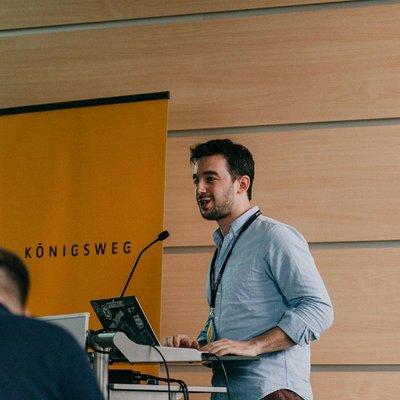
Christian Barra
Dizajnér softvéru a organizátor PyConu
Dizajnér softvéru, organizátor PyCon DE, člen Python Software Foundation
Let's talk about MLOps
The quantity of hype around machine learning and AI is probably second only to bitcoins and blockchains. But until a machine learning model is deployed to production the value delivered to companies is approximately equal to zero. Together with the common mantra that data science can't use agile/lean frameworks or that the best software engineering practises don't apply explains a lot about why often companies got burnt with their data science projects and why generally they under delivered.
MLOps is here to help, the machine-learning equivalent of DevOps: it solves the problems of implementing machine-learning in production. During this talk I will introduce the data science lifecycle, the concept of machine learning Ops, its characteristics, why is extremely required, how it compares to DevOps, how it will become a required capabilities for any DS/ML/AI Team, tools available and how you can start with it.

Mislav Cimperšak
Web developer, DevOps, manažér
Vzdialený/lokálny/čokoľvek-medzi-tým web developer s ~10- a Team Lead s ~3-ročnými skúsenosťami. Zodpovedný za všetko od softvérovej architektúry, team manažment, plánovanie projektov, mentoring až po prachobyčajné programovanie. V posledných rokoch znovaobjavujem svoju lásku k DevOps a našiel som si milenku s menom *Manažment ľudí*.
On the Edge of Leadership
How to lead a dev team with zero personal experience in people management while still having no idea how to manage even your own time. After several years of fairly regular software developer career path, I've found myself in a new role that I've unconsciously put myself into. Being a solid senior developer, management at the time agreed that I am a good candidate for the team lead. Being promoted to a new personal level of incompetence I felt lost and confused in my new role, but made a pact with myself to see this one through to the end. And so it came that for the past few years, I've been development team lead for several teams.
With zero formal training, relying on my intuition and various random pieces of advice I picked up from people smarter than me I've more or less successfully lead my teams to their goals. On that path, I've learned tremendously, improved myself and hopefully, my teams. I would like to share what worked and what didn't, my emotions, my regrets, and my wins.

Jorge Torres
Inžinier strojového učenia
Jorge Torres je momentálne spoluzakladateľ a CTO MindsDB a hosťujúcim učiteľom na UC Berkeley v oblasti automatizácie strojového učenia a vysvetliteľnosti. Pracoval v množstve dátovo intenzívnych start-upoch, naposledy spolupracoval s Aneeshom Choprom (prvý CTO vo vláde USA) na budovaní dátových systémov, ktoré analyzovali miliardy záznamov pacientov a viedli k maximálnym úsporám pre milióny pacientov. Svoju prácu na škálovateľných riešeniach použitím strojového učenia začal už v roku 2008 vo svojej prvej full time práci pre Couchsurfing, kde pomáhal spoločnosti vyrásť z niekoľko tisíc užívateľov na niekoľko miliónov. Jorge má tituly z elektrického inžinierstva a počítačových vied, vrátane magisterského titulu z počítačových systémov so zameraním na strojové učenie z Austrálskej Národnej Univerzity.
Machine Learning Democratization
We can't expect Machine Learning experts to be both domain experts across various fields and also true experts in ML, it is crucial to rethink how we build tools so that we can provide Machine Learning capabilities to experts in various disciplines that are not necessarily savvy in machine learning, but are experts in their own domains, so that they can too become participants of the data science community.
This talk is divided into three sections:
The first one, dives into the importance of democratizing Machine Learning, its objective is to demonstrate why now this is a crucial issue to be solved and to show the risks and problems that present themselves when Machine Learning Engineers take in the responsibility of building predictive technologies in domains that are not necessarily where they are the most experts on.
The second part of this talk focuses on some solutions and approaches to challenges of democratizing Machine Learning, as well as the journey and results we have seen at MindsDB while at this endeavor as well as what would be new ways that the ML community can think of the next generation of tools being built.
The third and most extensive section of this talk, focuses on the new issues that are born once machine Learning capabilities are on the hands of not ML experts, more importantly, the implications of delegating the Machine Learning machinery to a system, and what is important in order to trust those systems. Which leads to the importance in further developing our understanding of explainability, interpretability, and robustness of ML.
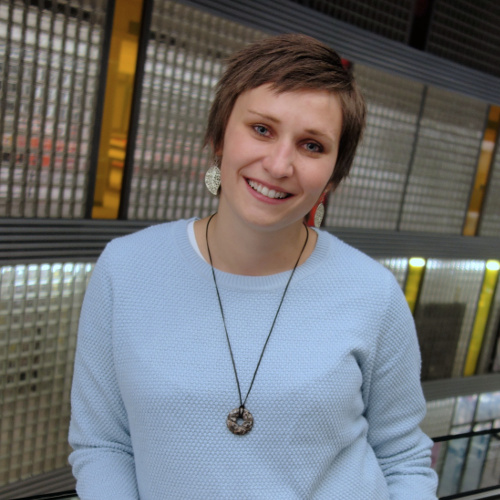
Světlana Hrabinová
UX dizajnérka a marketingová špecialistka
Světlana pracuje jako UX designér + markeťák v Knihovně Univerzity Tomáše Bati ve Zlíně. Má PhD. z Univerzity Komenského v Bratislavě (obor knižničná a informačná veda), její dizertačka se věnovala testování použitelnosti mobilních webových sídel v prostředí knihoven. V univerzitní knihovně má na starosti (kromě různých marketingových aktivit a propagace) návrh, tvorbu a celkové zlepšování uživatelských rozhraní u systémů a webových služeb knihovny.
Nenuťte uživatele přemýšlet
Myšlenka Steva Kruga "Nenuťte uživatele přemýšlet" bude hlavní inspirací pro příspěvek, který se bude věnovat pojmům jako je UX (user experience), UI (user interface) a použitelnost. Smyslem je poukázat na základní principy použitelnosti a návrhu uživatelského prožitku, které pomohou navrhovat a vytvářet intuitivní a pochopitelné služby či uživatelská rozhraní s cílem jít svým uživatelům naproti, tedy aby uživatelé museli dělat pouze nezbytné kroky s vynaložením co nejmenšího úsilí.

Tibor Frank
Senior Python developer a tester
Senior Python developer a tester v Pantheon Technologies zameraný na vizualizáciu a prezentáciu výsledkov testovania.
Automated visualization and presentation of tests results
Thousands of performance tests run by tens of Jenkins jobs generate gigabytes of data. It is not an easy task to provide it to our audience. But we do our best. Data visualization is not only coding in Python, it is above all finding the best way how to transform well structured but boring xml files to fancy and informative graphs and tables. They must be beautiful, gratifying, logical and functional like any good design and/or architecture.

Laurent Picard
Nadšený developer cloudových technológií a strojového učenia
Laurent je developer so záujmom o softvér, hardvér, vedu a čokoľvek, čo formuje budúcnosť. Pracuje pre Google, kde neúnavne skúma možnosti cloudových technológií. V predchádzajúcom živote sa podieľal na vtedy mladom ebook priemysle, spoluvytvoril prvú európsku čítačku elektronických kníh a spoluzakladal Bookeen. Dnes rád zdieľa svoje vášne na medzinárodných konferenciách. Nájsť ho môžete na Twitteri ako @PicardParis.
Building smarter solutions with Machine Learning, from magic to reality
“Any sufficiently advanced technology is indistinguishable from magic.” Well, Machine Learning can look like magic, but you don't need to be a data scientist or an ML researcher to develop with ML.
So, what about making your solution smarter without any knowledge in AI? With pre-trained models and a few lines of code, Machine Learning APIs can analyze your data. Moreover, AutoML techniques can now help in getting even more specific insights tailored to your needs.
In this session, you'll see how to transform or extract information from text, image, audio & video with the latest ML APIs, how to train an AutoML custom model, and you'll be an active player of a live demo. Don't put your smartphone in airplane mode!
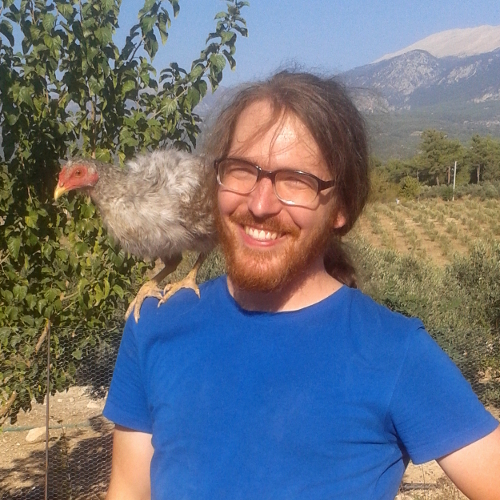
Christoph Ritzer
Softvérový developer a expert na blockchain
Som developer a expert na blockchain z Viedne. Vždy som bol programátor s akademickým backgroundom v oblasti sociálnych vied. Začínal som ako samouk-nadšenec vo veku 15 rokov tvorením hier a zabávaním sa so skriptami, až kým som sa nakoniec nestal profesionálnym developerom softvéru. Vybudoval som interagujúcu blockchainov infraštruktúru v rýchlo rastúcom start-upe, ktorý som nedávno opustil, aby som začal znova v začínajúcom start-upe, ktorý sa zameriava na využitie priemyselných dát v blockchaine. Za 15 rokov písania kódu som bol vždy nadšený myšlienkou open sourcu a prispieval som do mnohých projektov.
Intro to Blockchain with Python
This talk is structured into two parts of approximately equal length:
First an introduction to blockchains in general. Most have heard about blockchains or bitcoin but how does it actually work and what is the technology driving it? This talk will explain what a cryptocurrency wallet is, how transactions are created and how they are brought together to form blocks that build the blockchain. I will outline differences between the most widely used implementations and the core technological concepts behind them, like Proof-of-Work versus Proof-of-Stake, consensus algorithms, trustless systems and the ideas behind them.
In the second half of the talk I draw on my experience working with python in my professional career and give an overview of the python ecosystem for blockhain and cryptocurrency development. I will showcase some of the libraries and tools that exist, like btcpy and highlight some of the pros and cons (mostly pros) of using python in this sector.
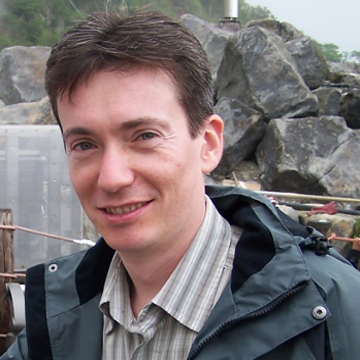
Radoslav Kokuľa
Test Lead
Rado začínal ako LabVIEW programátor, neskôr prešiel na Python a Robot Framework. V oblasti testingu sa pohybuje už viac ako 15 rokov a momentálne pracuje vo firme Kistler ako Test Lead.
Robot Framework – univerzálny nástroj pre automatizované testovanie
Robot Framework je open-source framework naprogramovaný v jazyku Python určený pre automatizáciu testov a podporu test-driven developmentu. Kompatibilita s rôznymi operačnými systémami, jednoduchá inštalácia, zrozumiteľná syntax vhodná aj pre ľudí bez programátorských zručnosti, s možnosťou importovať vlastné Python knižnice a moduly, a tiež ľahkou integráciou do CI/CD serverov (napr. Jenkins) sú jeho nesporné výhody. Vďaka množstvu dostupných knižníc je možné využiť Robot Framework na testovanie rôznych druhov aplikácii a zariadení s využitím širokej škály rozhraní, protokolov a dátových typov. Poskytuje taktiež možnosti paralelného vykonávania testov alebo spúšťanie testov na vzdialených systémoch. Neoddeliteľnou súčasťou je aj automaticky generovaný report vo formátoch html a xml, poskytujúci prehľadné informácie o trvaní, použitých dátach a výsledku vykonávaných testov a aj jednotlivých krokoch.
Príspevok predstaví tento nástroj na konkrétnych príkladoch testov vo formátoch pre keyword-driven, data-driven a behaviour-driven testing, ako aj prácu so Seleniom a REST API rozhraním.

Hans Christian Feßl
Aplikačný a databázový manažér
Som aplikačný a databázový manažér viedenskej filharmónie. Predtým som bol súčasťou vývojírskeho tímu v A1 Telekom Austria. Ako freelancer konzultujem vo firmách ohľadne digitálnych technológií a pracujem na malých webstránkach. Tiež vyučujem použiteľnosť, interakciu ľudí a počítačov, vytváram prototypy a prednášam na SAE Inštitúte vo Viedni.
Think about the user
As developers, we are mainly focused on making things work. Business logic and process analysis, reinventing the wheel and questioning every line of code are what we do best. But when it comes to making this very complex systems work for users, we are quickly frustrated, because it feels like they just don't get it. As people of code, we are no longer regular users because we understand what is going on behind the curtains of the big show that is called a User Interface. What means, that by default, users have a totally different experience then we developers do. In this talk, I want to extend my lightning talk from last year to half an hour, to give you some tips on how to get a users perspective on the user interface you want or have to create.
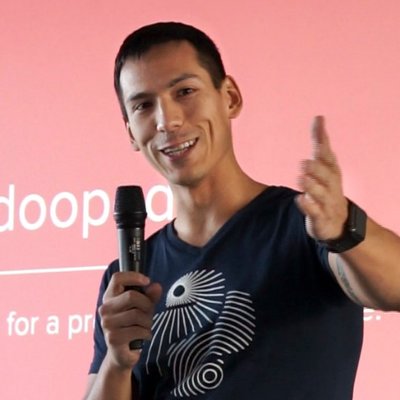
Anton Caceres
Software developer a organizátor PyConov
Vediem softvérovú agentru v Mníchove a organizujem konferenciu PyConWeb. Rád zdieľam skúsenosti na tech eventoch, stretávam nových ľudí a učím sa nové veci.
Avoiding Macro Trouble of Micro Services
Any change in software architecture is a significant time investment. Writing microservices in Python is a joy, but when you decide on it, there is often no way back. Therefore it is always an advantage to know what to expect in advance, not just from inspiring blog posts but also from the harsh reality.
Having a bunch of smooth as well as tricky microservice migrations in the past, I would like to share typical pitfalls of choosing a framework stack, communication protocol, conventions, and deployment process — all covered by real projects.

Suryansh Tibarewala
Python developer v booking.com
Suryansh pracuje ako developer v Booking.com na oddelení vývoja nových produktov. V Pythone programuje 4 roky a rád rozpráva o správnych postupoch pri vývoji softvéru. Pracoval v agilných tímoch, vytváral MVP a škáloval ich. O skúsenosti zozbierané z tejto práce sa podelí v tejto prednáške.
MVP, is never just a MVP
MVP: Minimum Viable Product. We all follow agile product development process, iterate fast, fail fast and in the disguise of a MVP we cut corners to release a product to the market ASAP. In this process, their are several compromises we make in the tech set up and the codebase to just get it out there. These compromises more often than not always bites us back.
And this is what the talk is about. The assumptions which never hold, the implementation which is never revisited, and the MVP which never ends up being just a MVP. By the end of talk, you would know the cautionary tale of the most common mistakes everyone makes while developing a new product and some measures on how you can avoid them.

Ondrej Sika
Python & DevOps inžinier z Prahy
Python & DevOps Engineer
Deploy your Python application into Kubernetes
Kubernetes is a very popular platform for deployments of applications. Let's deploy your Python app to Kubernetes and be independent on your hosting provider. I show you how to create Docker container for your Python app and how to deploy into Kubernetes locally and on Digital Ocean.

Petr Stehlík
Python vývojár v Kiwi
Python vývojár v Kiwi.com zameraný na finančné aplikácie. Som developer, ktorý rád rozbíja veci a potom ich dáva dohromady, aby fungovali ešte lepšie. Vždy sa rád podelím o svoje znalosti a poučím sa od ostatných.
The dos and don'ts of task queues
Let's talk about our experience with Celery and intentions to switch to RQ which failed. We'll show our setup of larger and more complex apps than the ones presented in doc examples together with some useful tips and tricks and how-tos on orchestrating such apps for thousands of tasks a day.
At Kiwi.com we heavily rely on task queues and asynchronous execution of code to process large amounts of requests coming to our back-ends. With the separation of our codebase to microservices, we can quickly try new tools and different approaches to process these large volumes of requests. The microservice we'll be talking about is making unreliable slow 3rd party services reliable and asynchronous with a bit of business logic sprinkled on top of it. We’ll tell a failure story of ours but resulting in a valuable lesson.
Most of our services use Celery and it's the go-to tool for new services as well but we wanted to be different with this new microservice. RQ is the next best choice for task queues and it is presented as simpler and more straightforward than Celery. That can definitely be true but after 3 weeks of research, development and struggling we found out the unpleasant truth about being simple and making the right choices. We won't talk about comparing the frameworks but rather about the approach on how to experiment with new things in your environment. After that, we'll present our current setup which can take upon any number of tasks. How we orchestrate the app and continuously integrate and deploy and what fun things await ahead of us in the development.
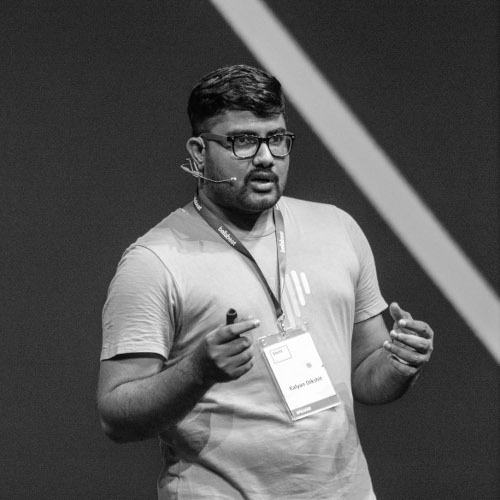
Kalyan Dikshit
Technický spíker z Mozilly, cez deň developer, v noci hacker
Kalyan Dikshit je technický spíker z Mozilly, predstaviteľ a člen hyderabadskej komunity v Indii. Prednášal na Internet Freedom Festivale v rokoch 2017 a 2018, Still Hacking Anyway (SHA), All Systems Go! 2017, Shift DEV 2018. Nedávno prednášal na “Full Stack Fest 2018” v Barcelone. Ako dobrovoľník lokalizoval softvér pre Mozillu, Tor, Orfox, Orbot, GlobaLeaks, Briar a OONIProbe. Aktuálne venuje svoj čas do ICRISAT, kde pracuje s dronmi a vyvíja techniky na prepojenie farmárov. Zakladateľ "JAVA 1.X Hyderabad Chapter" a spoluzakladateľ "Duck Duck Go Hyderabad Chapter". «Cez deň developer, v noci hacker»
Smart Homes + Tor = SSH [Secure Smart Home]
“Internet of Things,” “Smart Devices,” “Smart Homes.” people are fascinated with them and their usage. But the most important things they tend to forget are “Security & Privacy”. Using Tor to divert prying eyes away from our connected homes.
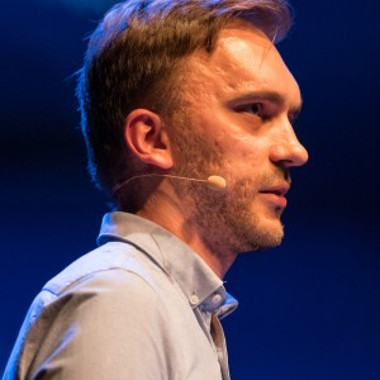
Paweł Lewtak
Softvérový inžinier
Developer s 10-ročnými skúsenosťami s backend systémami. Vytváral ich na zelenej lúke od analýzy a písanie špecifikácií až po nasadenie do produkcie. Veľký fanúšik a evanjelista neustáleho učenia, organizátor Coding dojo stretnutí.
Long term IT projects
Not everybody has a chance to work on new project from scratch. Everybody has some ideas what to do for such a project so it'll be a good one instead of legacy in a near future. During this talk I want to share my experience and show what works for me. I'll start from project analysis and end on deployment and beyond. I want to discuss some common mistakes and misconceptions and hopefully give you some ideas you could use for your own project regardless of its size. With a bit of work some/all could be applied to legacy projects as well.

František Benko
SysAdmin Team Lead v Exponea
Dva roky práce v Exponea ma naučili dve základné veci. Veľké systémy nasadené naprieč niekoľkými lokalitami sú skvelé. Automatizácia takýchto systémov je ešte viac skvelá.
We run huge in-memory databases in GKE and we love it!
We invite You on the talk about our largest scale change in history of Exponea. We'll show you how we managed to run multi-terrabyte sharded in-memory DBs in the environment of ephemeral containers, hundreds of python and go workers in multiple kubernetes namespaces and several hundred VMs in google cloud. You don't want to miss our way of automating this system too.
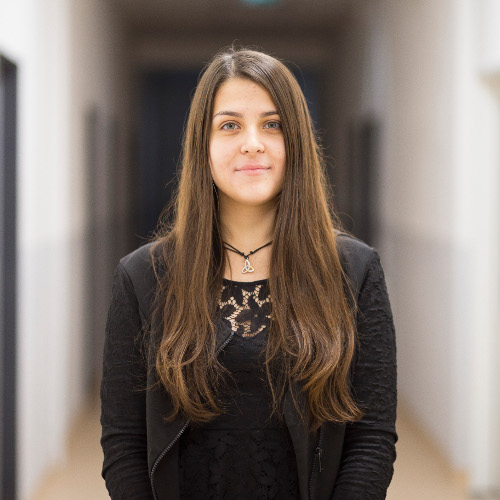

Magdaléna Bellayová
Študentka gymnázia
Študentka piateho ročníka na Gymnáziu, Golianova 68 v Nitre, ambasádorka Microsoft. Účastníčka prvého Microsoft AI Bootcampu o čom prezentovala na Microsoft konferenciách Vzdelávame pre budúcnosť v Poprade, Košiciach a Leviciach. Aktívne sa zapája do mimoškolských aktivít zaoberajúcich sa popularizáciou informatiky ako vedecký deň detí, či letný informatický tábor. Momentálne pomáha s realizáciou detského počítačového krúžku na KI FPV v Nitre, kde mimo iného využíva aj BBC micro:bitov. Svoj talent v programovaní rozvíja aj v rámci programu DofE.
Eva Kupčová
Študentka gymnázia
Študentka maturitného ročníka Gymnázia Golianova v Nitre. Medzi jej aktivity patria napríklad program DofE alebo doučovanie práce s počítačom v domove pre seniorov. Počas leta sa zúčastnila projektu pre dievčatá od Microsoftu - prvého AI Bootcamp, kde sa po prvý raz stretla s programovaním Microbitov. V budúcnosti sa chce stať softvérovou inžinierkou.
Programovať môže každý. Fakt alebo mýtus?
Čo keby ste mali riešenie na oživenie vyučovania programovania? Riešenie, ktoré svieti, reaguje na podnety, alebo dokonca posiela správy? A môže programovať skutočne každý? Na workshope sa pokúsime nájsť odpoveď na tieto otázky. Vyskúšame si zábavné programovanie, či už s využitím grafického blokovo orientovaného programovacieho jazyka alebo textového jazyka MicroPython. Máme pre vás pripravenú ochutnávku práce s programovateľným mikropočítačom BBC micro:bit, s prezentáciou praktických tipov na rôzne aktivity pre študentov. Vzbuďme v študentoch chuť programovať!

Peter Kučera
Stredoškolský učiteľ informatiky, autor učebníc Pythonu
Pôsobí ako učiteľ informatiky na 1. súkromnom gymnáziu v Bratislave. Je členom predmetovej komisie informatiky pri Štátnom pedagogickom ústave. Vytvoril sériu učebníc Programujeme v Pythone spolu s Príručkami pre učiteľa, maturitnou zbierkou úloh a zbierkou testov. Vedie Klub učiteľov informatiky. Realizuje školenia jazyka Python pre učiteľov. Na praxi pripravuje študentov učiteľstva informatiky (fakultný učiteľ FMFI UK).
Programujeme v Pythone na strednej škole
Rozmýšľate, čo vyučovať na seminári z programovania, ak chcete svojich študentov naučiť ešte viac? Základnú a maturitnú úroveň programovania, ktorú sme predstavili v minulosti, sme rozšírili o ďalšie zaujímavé témy. V príspevku vám predstavíme, čo učíme na seminároch z programovania. Ukážeme vám, ktorým témam sa venujeme, ako sme ich spracovali, ktorý kontext úloh sa nám osvedčil v praxi. Tiež vám predstavíme kompletné materiály na strednú školu. Ako aktivizovať študentov? Aké programy vedia vytvoriť a ako tvoria seminárne práce z programovania? Aj týmto otázkam sa budeme venovať v našom príspevku.
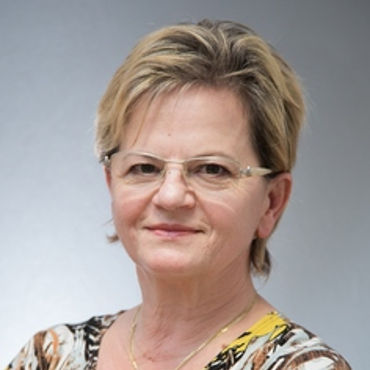
Miroslava Šturmová
Stredoškolská učiteľka informatiky a programovania
Som učiteľka informatiky a programovania na Strednej priemyselnej škole technickej v Martine, ale považujem sa za večnú študentku. Rada sa učím nové veci, preto som sa začala kamarátiť aj s Pythonom. Napriek tým, ktorí si myslia, že už v mojom veku takýchto priateľov nepotrebujem.
Objavovanie VPythonu v Dudley College
V marci 2017 dostali žiaci Strednej priemyselnej školy technickej v Martine (SPŠT) prvýkrát príležitosť absolvovať prax v Dudley College vo Veľkej Británii. Vďaka úspešnému projektu Erasmus+ „Turiec do Európy, Európa do Turca“, ktorý pripravila K. A. B. A. Slovensko, sa tu zoznámili s programovacím jazykom Python. Projekt bol úspešný aj v školskom roku 2017/2018. Dudley College sa tak stala na dva marcové týždne školou pre desiatich tretiakov technického lýcea SPŠT. Odborný program bol zameraný na tvorbu efektívnych algoritmov, rozvoj logického myslenia, grafiku a nástroj pre vytváranie 3D animácií v reálnom čase - VPython. Svoje nadobudnuté vedomosti a praktické zručnosti odovzdali účastníci mobility aj ďalej. Učitelia informatiky SPŠT a Gymnázia Viliama Paulínyho Tótha (GVPT) v Martine nadviazali na úspešnú spoluprácu z minulého roka, opäť spojili svoje sily a pripravili druhý ročník odbornej konferencie PYTHON DAYS 2.0. V dňoch 31.5 - 1.6.2018 odzneli na GVPT zaujímavé prednášky, robilo sa veľa workshopov. Na jednom z nich sme predstavili gymnazistom VPython a vývojové prostredie GlowScript. Výstupy z mobility Erasmus+ tak neostali len doma, na SPŠT, ale nadobudli oveľa širší rozmer. Na konferencii PyCON SK 2019 predstavíme toto prostredie, jeho nástroje a ukážeme práce, ktoré sme vytvorili.
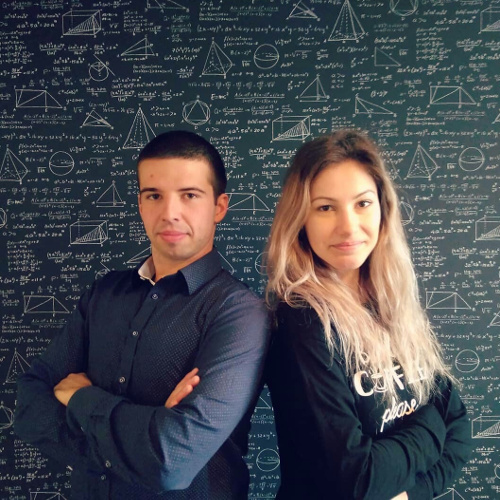
Karol Hrubjak
Špecialista na strojové učenie a big data inžinier
Veronika Žatková
Špecialistka na strojové učenie a vývojárka softvéru
Špecialistka na strojové učenie a vývojárka softvéru v CogneXa, študentka FIIT STU.
Machine learning workshop v Pythone
Náš workshop je zameraný na ukážku toho, ako môže byť strojové učenie použité na riešenie rôznych problémov a ako prejsť z programovania a data science do aplikovaného strojového učenia. Účastníci sa budú učiť na ukážkových datasetoch. Cieľom workshopu je vyriešiť zaujímavý klasifikačný problém pomocou postupov aplikovaného strojového učenia a skončiť z natrénovaným modelom. Workshop bude v slovenskom jazyku. Účastníci by mali mať základnú znalosť o programovaní v Pythone a ovládať základy dátovej analýzy v Pandas alebo R (odporúčas sa mať naprogramovaný aspoň jeden menší projekt).
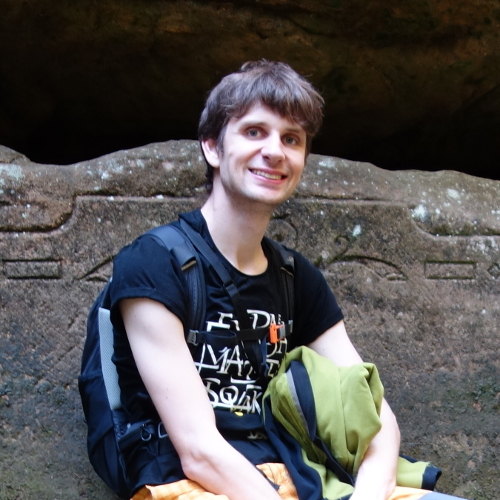
Filip Štefaňák
Data Pipeline Team Lead
Filip, currently a "Data Pipeline" team lead at Exponea, has always combined his passions for software and complex systems. From architecting and coding software frameworks at NetSuite, through teaching algorithms at FI MU Brno, winning a management simulation game during his Business Management studies, to leading agile development teams, he keeps putting his geeky heart and brain into everything he does. He also enjoys board games, puns and not taking himself too seriously.
Stability with a Hockey-stick
"Make fast and break things" used to be a popular motto at Facebook, but at some point it needed to change. How can a fast-growing SaaS company like Exponea handle the ever increasing need for service stability? We will take a quick look at all the bazillion things that must be done, panic, and talk about how they can actually be done.
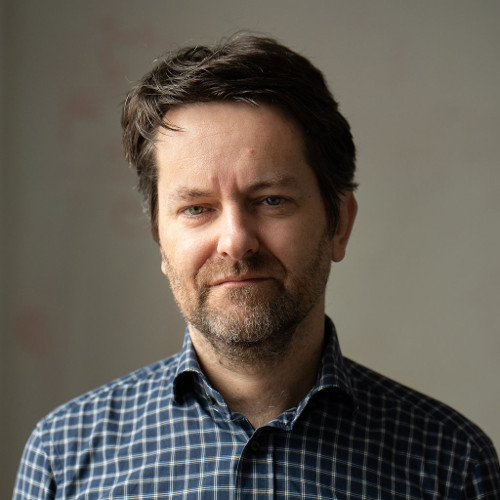

Gabriel Lachmann
Spoluzakladateľ Slovensko.Digital
Gabriel Lachmann je výkonný riaditeľ a zakladajúci člen občianskeho združenia Slovensko.Digital. V roku 1999 bol spoluzakladateľom softvérovej firmy ELLINE s.r.o., ktorá sa venovala dodávke internetových portálov, bankových a burzových systémov. ELLINE sa po postupných fúziách transformovala na systémového integrátora EEA s.r.o.. Gabriel v súčasnosti pôsobí je v pozícii predsedu predstavenstva a koordinuje výskumné aktivity spoločnosti. Je spoluzakladateľom OZ Utopia, neformálnej skupiny OpenData.sk a je členom Spoločnosti pre otvorené informačné technológie. Popri manažérskych prácach sa venuje témam informatizácie spoločnosti, machine learning v biznise, OpenData, LinkedData, ETL a BI. Rád programuje v jazykoch Scala, Java a JavaScript v prostrediach Apache Spark, Pentaho, Talend, Tableau.
Ján Suchal
Spoluzakladateľ Slovensko.Digital
Jano Suchal má v Slovensko.Digital na starosti vývoj a komunitu. Celý svoj profesionálny život sa venuje vývoju softvéru, vyštudoval softérové inžinierstvo na FIIT, kde dodnes učí mladých programátorov a programátorky. Poznáte ho pravdepodobne z Facebooku, kde píše nelichotivé správy o stave slovenskej informatizácie verejnej správy. Podpredseda vlády a lekár Richard Raši ho nazval takzvaným odborníkom na informatizáciu.
Ako prestať kradnúť v štátnom IT?
Slovensko.Digital už vyše troch rokov zasahuje do veľkých štátnych IT projektov a informatizácie verejnej správy ako takej. Dozviete sa či to bolo na niečo vlastne dobré, čo sa bude diať v informatizácii ďalej, čo s tým vie urobiť bežný programátor a IT komunita. Povieme Vám niečo bližšie o eurofondovom projekte, ktorý nám schválili za Kaliňáka a ako tieto peniaze využívame, aby sme robili zle zlodejom konštruktívne vylepšovali štátne IT. Povieme aj pozitívne správy o témach ako Open API či My Data, ktoré by mohli posunúť informatizáciu tak dopredu, že nám aj Estónci budú závidieť. Keď všetko pôjde podľa plánu mali by sa toho dožiť nielen naše budúce vnúčatá..
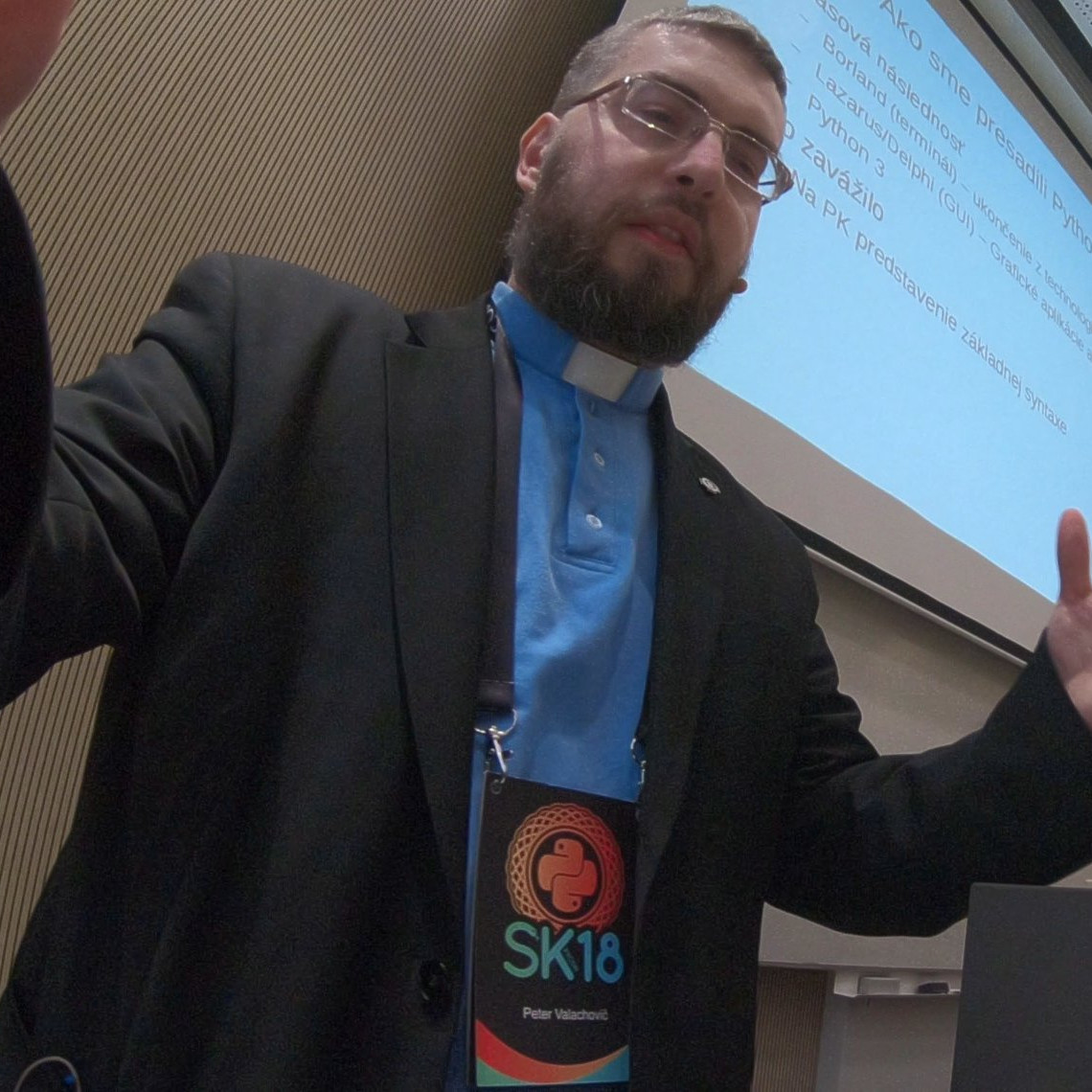
Peter Valachovič
Učiteľ informatiky
Mgr. Ing. Peter Valachovič, je učiteľ informatiky na Piaristickom gymnáziu v Nitre, kde vyučuje, ako základný kurz programovania v Pythone v rámci informatiky, tak i kurz prípravy na maturitu na voliteľných seminároch z informatiky. V krátkosti prezentoval začiatky prechodu na Python na PyCon SK 2018 a teší sa, že tento rok môže prísť na EduSummit s dvoma študentmi pracujúcimi na svojich pythonových projektoch v rámci školy.
Prechod na Python u Piaristov v Nitre a niektoré tamojšie študentské projekty
Krátko sa podelíme o tom ako sa vyvíja prechod na Python z pascalu (Delphi/Lazarus), čo sa nám podarilo, a aké výzvy pred nami sme identifikovali konkrétne by sme chceli hovoriť o tom ako postupujeme pri vývoji kurzu pripravujúceho na maturitu z informatiky kedy použijeme programovací jazyk python vo verzii 3.X. Predstavíme projekt študentskej učebnice pre základný kurz Pythonu - od študenta pre študentov a študentský projekt vylepšenia zvonení na škole.
Pri predstavovaní študentskej učebnice bude Tomáš Kiss hovoriť o motivácii pre túto učebnicu a spôsobe akým ju realizuje. Tiež by chcel predostrieť výzvy, ktoré identifikuje a tiež spôsob ako budú môcť ostatní učebnicu získať.
Pri projekte o vylepšení zvonení na škole opíše Jakub stav, aký bol na škole predtým a popíše motiváciu k zlepšeniu ako aj realizovaný systém. Chcel by tiež poukázať na možnosti a úskalia, ktoré sa pri vývoji zvonení vyskytli.

Ingrid Budau
Developerka v Radar Services a flautistka na konzervatóriu
V jedno krásne slnečné popoludnie hrala Ingrid spokojne na flautu. Zrazu sa pohol krík a z jeho vnútra zrazu na denné svetlo pomaly elegantne vykĺzol Python. Takto Ingrid zistila, že pomocou flauty vie začarovať pytónov a stali sa tak priateľmi, Čoskoro sa spolu vybrali do lesa, aby našli dávneho japonského ducha lesa. P.S.: Ingrid je developerka v RadarServices a študuje flautu na kozervatóriu v Grazi. Miluje jazyky (aj programovacie) a často sníva o japonskom svet a kultúre.
The Apprentice's Enthusiastic Guide to pandas (or how to look at the world through the gentle eyes of one)
The Pandas soon realized there's no way they are going to survive the ordeals and hardships of this world, if they didn't finally and without the blink of an eye of hesitation pull themselves together, stop being the lazy fluffy beings, they have long been known for and start reorganizing their lives ASAP. They needed a fresh view over the world and its intrinsic mechanisms, light had to be shed upon the information they possessed about survival, in a few words, they had to start over. This is how in the midst of the forest a high performative library was coming to life, whose powerful toolkit would enable them a long lasting life of happiness and joy. This long-dreamed library should import the information they have been gathering about the world for long gone centuries and help them look at it through different eyes. They wanted to structure their world views and beliefs into sensible types and categories, remove from their genes their procrastinative behavioural patterns, drop them altogether. After laborious efforts of dealing with missing data about their surroundings, grouping and counting the meaningful rest, filtering the nonsensical superstitions, they could finally and, without doubt, point out with precision, where the bamboo sprouts were freshest, most succulent, fiber rich, absolutely scrumptious and the moment of the year, dictated by the moon calendar, when they are fluffiest, cosiest, most willing and irresistibly fall for one another and cuddle up. They put all this secret survival kit into easily understandable pictures and graphs for the dreamers out of them, who weren't prepared to put in all the effort of learning all those complicated symbols, just in order to survive and just wanted to admire the sky goddess, the moon. But wait, they didn't have a name for their grandiose library, so they just wanted to make a statement of being the most diligent creature of them all and called it, simply and unmistakably, pandas!


Tobias Kohn
Výskumný pracovník na Univerzite v Cambridgi
Tobias pôsobil vyše desať rokov ako stredoškolský učiteľ a napísal dizertačnú prácu z oblasti výuky počítačových vied. Momentálne pracuje ako výskumný pracovník na Univerzite v Cambridgi, kde skúma možnosti optimalizácie Python programov.
Dennis Komm
Prednášateľ na PH Graubünden a ETH Zurich
Dennis študoval počítačovú vedu na Univerzite RWTH v Aachene, a PhD. titul získal v roku 2012 na ETH Zurich. Okrem vedenia kurzov učenia na rôznych školách a univerzitách, prednáša na PH Graubünden a tiež ETH Zurich. Jeho výskum sa okrem didaktiky počítačovej vedy zaoberá rôznymi témami v oblasti algoritmov a teórie komplexity.
Using Python to Teach Algorithmic Efficiency
Python has become one of the most widely used languages in computer science education, and is in many regards an excellent choice for high school and college level. However, one of the main tasks of sustainable computer science education is to go beyond teaching a programming language, and discuss aspects of “computational thinking". An important example for computational thinking is a proper analysis of how well an algorithm works, how efficient it is. But can we really teach efficiency in an introductory Python class?
In this workshop, we exemplify how to introduce the notion of time complexity to young students on both an intuitive and sufficiently formal level. Besides hands-on examples that we implement in Python, we want to investigate the theoretical underpinnings that allow us to evaluate and compare different algorithms for the same class of problems.
We assume a background in programming and some basic familiarity with Python.
Participants work on their own notebooks.
